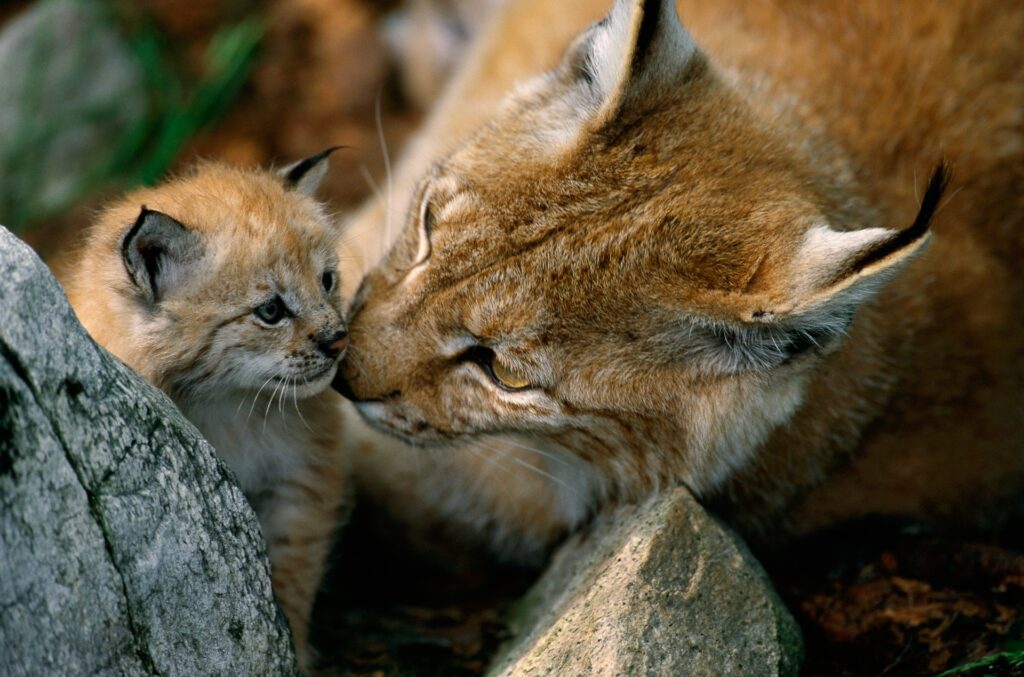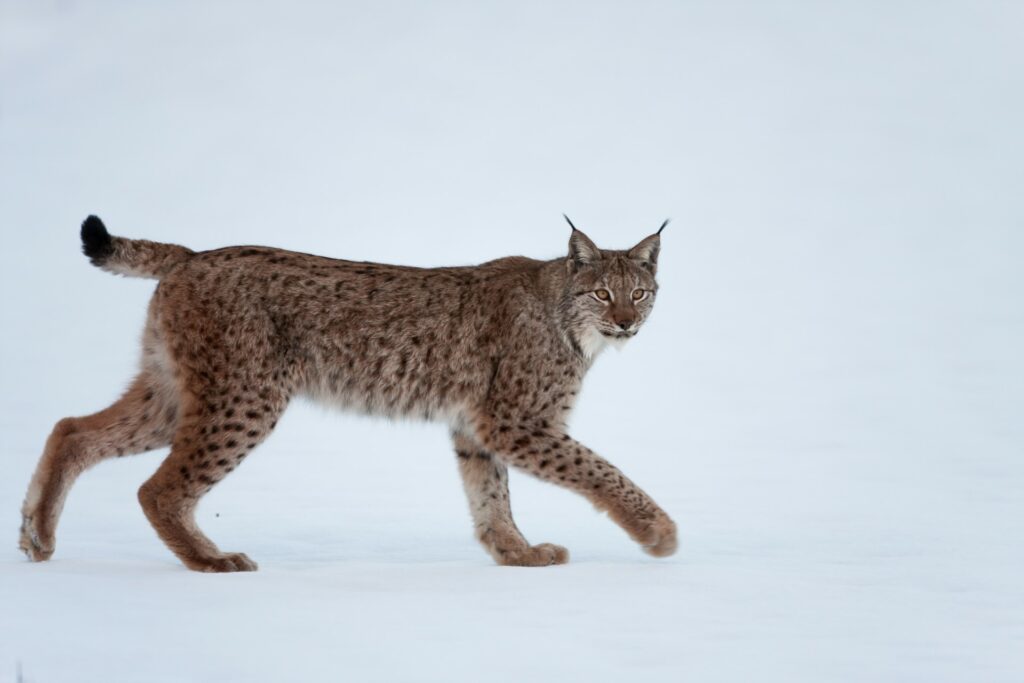The license hunting of lynxes in Sweden started on Friday and will last the whole month of March amid growing concerns that the EU plans to downgrade the protection status of lynxes and other carnivores at the request of some member states.
Out of an estimated population of 1400 – 1450 lynxes, 10 % or 143 animals will be killed this year. Last year, a record number of 188 lynxes were shot. The Swedish Environmental Protection Agency (Naturvårdsverket) has estimated that a minimum number of 870 lynxes is necessary to preserve the population but the figure is uncertain and other factors seem to be in play.
The wolf population in Sweden (maximum 450 individuals) is one of the proportionally smallest ones in the EU, considering the fact that Sweden is the fifth largest country in Europe with only 10,5 million inhabitants, but still Sweden supports a European Commission proposal to downgrade its protection status.
“Some hunters want less competition for the same prey (roe deer), others see the lynx hunt as a nice trophy and an exciting sport, also attracting foreign trophy hunters,” explains Staffan Widstrand, a Swedish photographer and writer. “The Swedish government’s policy is to bring down the numbers of carnivores to their absolute minimum levels.”
He might be right. As previously reported, a Council working group discussed in February a Commission proposal to downgrade the protection of wolves in the EU but did not take any decision because the member states were divided on the proposal. A decision in the working group would require a qualified majority.
In its proposal, the Commission claimed that the increasing numbers of wolves pose a danger, particularly to livestock. The same argument is used for lowering the protection of lynxes.
A Finnish note to the Agriculture and Fisheries Council (AGRIFISH) meeting in January welcomed the Commission proposal to change the international status of wolves from ‘strictly protected' to ‘protected'. The note was supported by the Austrian, Czech, Greek, Italian, Latvian, Romanian, Slovak and Swedish delegations.
Furthermore, the note stated that in “some regions, also other large carnivore populations, such as the brown bear and lynx populations in boreal biogeographic region, no longer require strict protection measures either”. In the note, all member states sharing common large carnivore populations are invited to enhance regional cooperation on management, monitoring and research.
Asked to comment on the note, Peter Kullgren, Sweden’s minister for rural affairs, told The Brussels Times that the wolf issue is the most important part in the note for the government. “At the same time, the government shares Finland’s assessment that the protection status of some populations of lynx and bear can be lowered.”
“It can be reasonably assumed, following the recent Commission analysis of wolves, that the same assessment could be valid for some lynx populations that are significantly bigger and more viable than the wolf stock,” he added. “For the Habitats Directive to be topical and relevant, it must be possible to raise the protection status when required and to lower it when it’s not necessary anymore.”

The hunter cannot distinguish between male and female lynxes. The young in the nest will have difficulties in surviving if their mother is shot. Credit: Staffan Widstrand
As regards the hunting of lynxes, he explained that ”limited license hunting aims among others at preserving low damage levels and taking into account the socio-economic interests of those who live and work in areas with wild animals without risking the favorable conservation status of the lynxes.”
This does not convince wildlife activists who object against what they regard as a cruel and unnecessary hunt and point to the actual damage figures. In 2022, 171 attacks by lynxes on livestock (mostly sheep) were reported, a minuscule figure considering the number of sheep in Sweden. The damage could have been prevented in most cases if the owners had built predator-proof fences.
“The trophy hunting motive is apparent,” Swedish wildlife ambassador Misha Istratov wrote in an op-ed last year, pointing to the overrepresentation of the hunting lobby in the regional county boards that are responsible for wildlife management and hunting decisions. There is no logic in allowing the killing of lynxes to protect a smaller number of sheep.
Sweden is known for its big elk population and elk hunting is both popular and necessary for managing the population. Carnivores are something else. Public opinion in Sweden is largely against hunting of lynxes and other carnivores, at least in the southern parts of the country where the livestock can be protected, and during their mating period in March when they are especially vulnerable.
In fact, the actual number of killed lynxes is bigger than the allowed number. It is practically impossible to distinguish between male and female lynxes. The collateral damage of killing female lynxes is that their young offspring will be left alone with small chances to survive. Kullgren, the Swedish minister, referred to the environmental protection agency when asked why March was chosen as hunting month.
The agency has shown little interest in participating in an EU-funded project in Poland where lynxes from other EU member states are reintroduced in nature. The idea was to move endangered Swedish lynxes to Poland where hunting is forbidden. When presented the idea, the agency decided not to take any action. Instead, it allowed the annual lynx hunt to take place during the most sensitive period.
M. Apelblat
The Brussels Times

